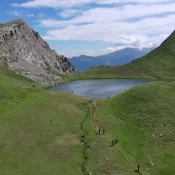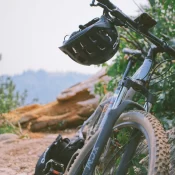
All about Rafting
The History of Rafting Around the World
Rafting began to develop as an activity in the early 19th century when wooden rafts were used for river transportation and exploration in the United States. However, the modern form of rafting, with inflatable boats and the organization we know today, was established in the 1950s and 1960s. The first organized rafting expeditions took place on the Colorado River through the famous Grand Canyon, laying the foundation for rafting as an adventure sport.
The Spread of Rafting
During the 1970s and 1980s, rafting spread internationally and evolved into a global sport. Rivers in the Himalayas, Costa Rica, Chile, and Africa became popular destinations for rafting enthusiasts. Each region offers unique challenges and landscapes, making rafting a global phenomenon.
Rafting as an International Sport
Today, rafting is internationally recognized as an adventure sport. The International Rafting Federation (IRF) was founded in 1997 and organizes rafting competitions that attract teams from around the world. It promotes safety rules and technical standards while also encouraging environmental protection.
The Rafting Experience Today
Rafting today is accessible to everyone, from beginners to experienced athletes, with rivers offering routes of varying difficulty, from Class 1 (calm waters) to Class 6 (extremely dangerous rapids). Safety is a top priority, and guided trips are always accompanied by experienced guides and specialized equipment.
Rafting’s Relationship with Ecology
Rafting also promotes environmental awareness, with many rafting companies adopting sustainable practices, protecting rivers as natural resources.
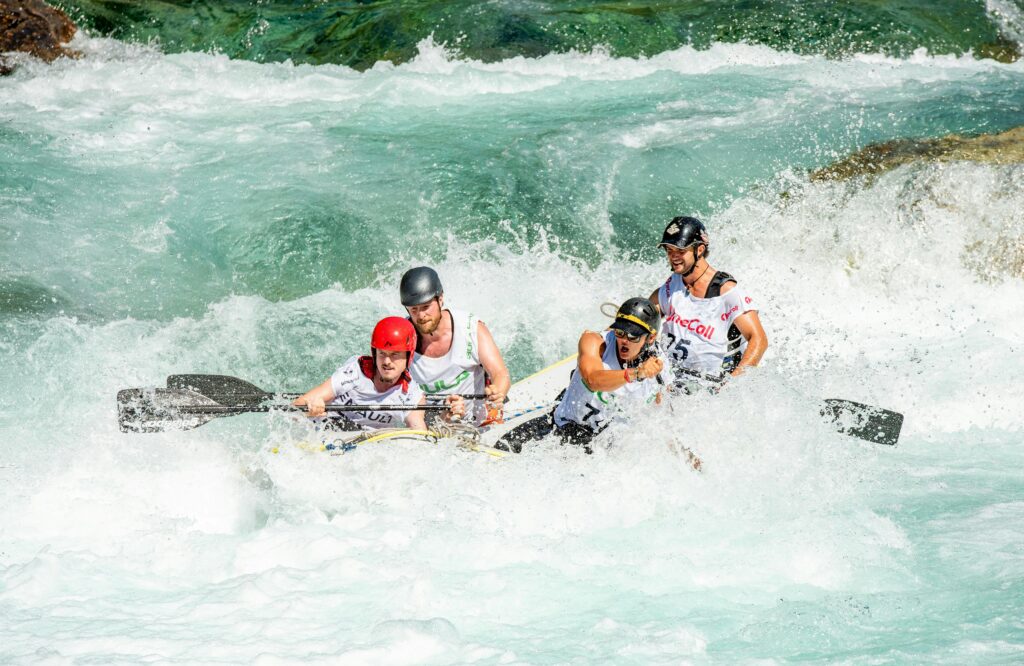
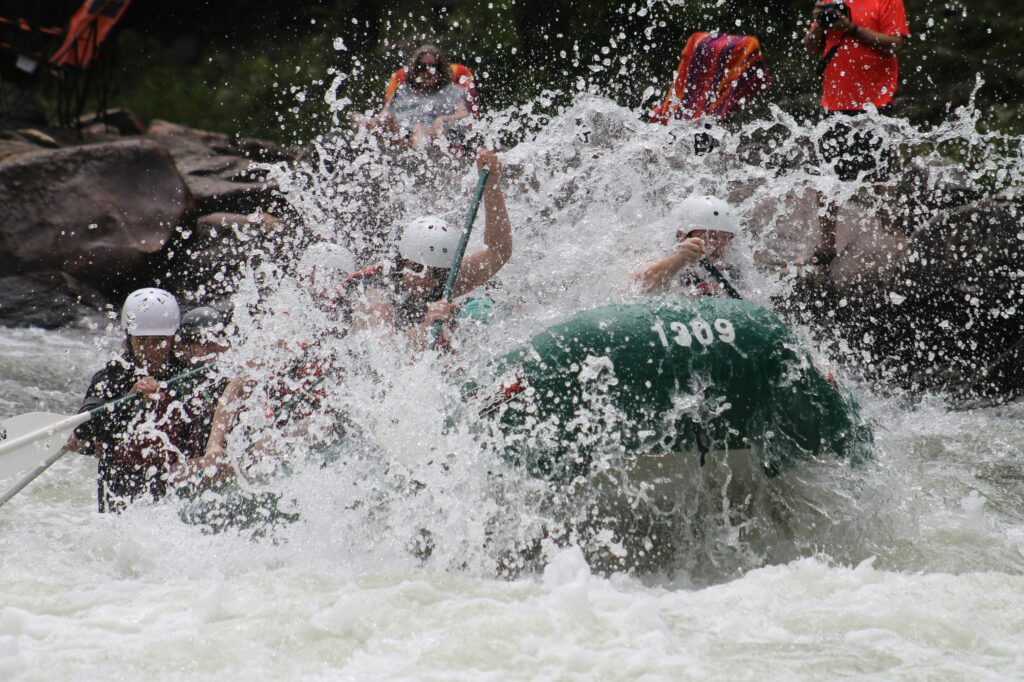
Ten of the Most Famous and Challenging Rivers for Rafting Worldwide
- Zambezi, Zimbabwe/Zambia – Known for its turbulent waters and crocodiles, offering Class 5+ rapids.
- Futaleufú, Chile – Clear blue waters and Class 4 and 5 rapids.
- Colorado, USA – The passage through the Grand Canyon is one of the most iconic rafting routes.
- South-Columbia, Canada – Powerful rapids in remote gorges.
- Kaituna, Indonesia – Class 5 rapids in isolated jungle regions.
- Nodrigiya, Nepal – In the Himalayas, with thrilling Class 4 and 5 rapids.
- Mangakara, New Zealand – Steep drops and technical routes.
- Tulum, Mexico – Strong rapids and stunning landscapes.
- Gauleygang, India – Class 5 and 6 rapids, challenging and dangerous.
- Beramachi, Russia – Technical and dangerous rapids.
The Spread of Rafting in Greece
In Greece, rafting started gaining popularity in the 1990s, primarily in areas with rich water resources and beautiful natural landscapes. Rivers like the Aoos, Voidomatis, Arachthos, and Lousios are ideal rafting destinations, attracting adventure lovers from Greece and abroad. The clean waters, beautiful valleys, and scenic gorges of Greek rivers offer unique rafting experiences for both beginners and advanced participants.
Key Rivers for Rafting in Greece
- Aoos (Epirus) – Known for its lush landscapes and rushing waters, the Aoos is ideal for adventurous rafting routes.
- Arachthos (Epirus) – One of the most popular rivers for rafting, with varied routes for beginners and experienced athletes.
- Voidomatis (Epirus) – Famous for its crystal-clear waters, Voidomatis offers a more gentle rafting experience, perfect for beginners.
- Lousios (Peloponnese) – One of the most beautiful rivers in Greece, with scenic gorges and river crossings that increase adrenaline.
Rafting Equipment
Rafting equipment has evolved significantly over time, ensuring the safety and comfort of participants. The essential rafting equipment includes:
- Inflatable boats: Modern inflatable boats are made from durable materials like PVC or polyurethane, offering resistance to the rough conditions of the river.
- Paddles: Paddles are made from various materials, such as aluminum, wood, and carbon fiber. They are lightweight and durable, facilitating paddling in challenging water conditions.
- Life jackets (PFD): Life jackets are mandatory for all participants as they provide buoyancy and safety in case of falling into the water.
- Helmets: Helmets are also essential to protect the head from hitting rocks or other obstacles.
- Wetsuits: In colder waters, participants wear wetsuits to stay warm and dry during the course.
- Water shoes: Specially designed shoes with good grip on wet surfaces are important for safety when entering and exiting the river.
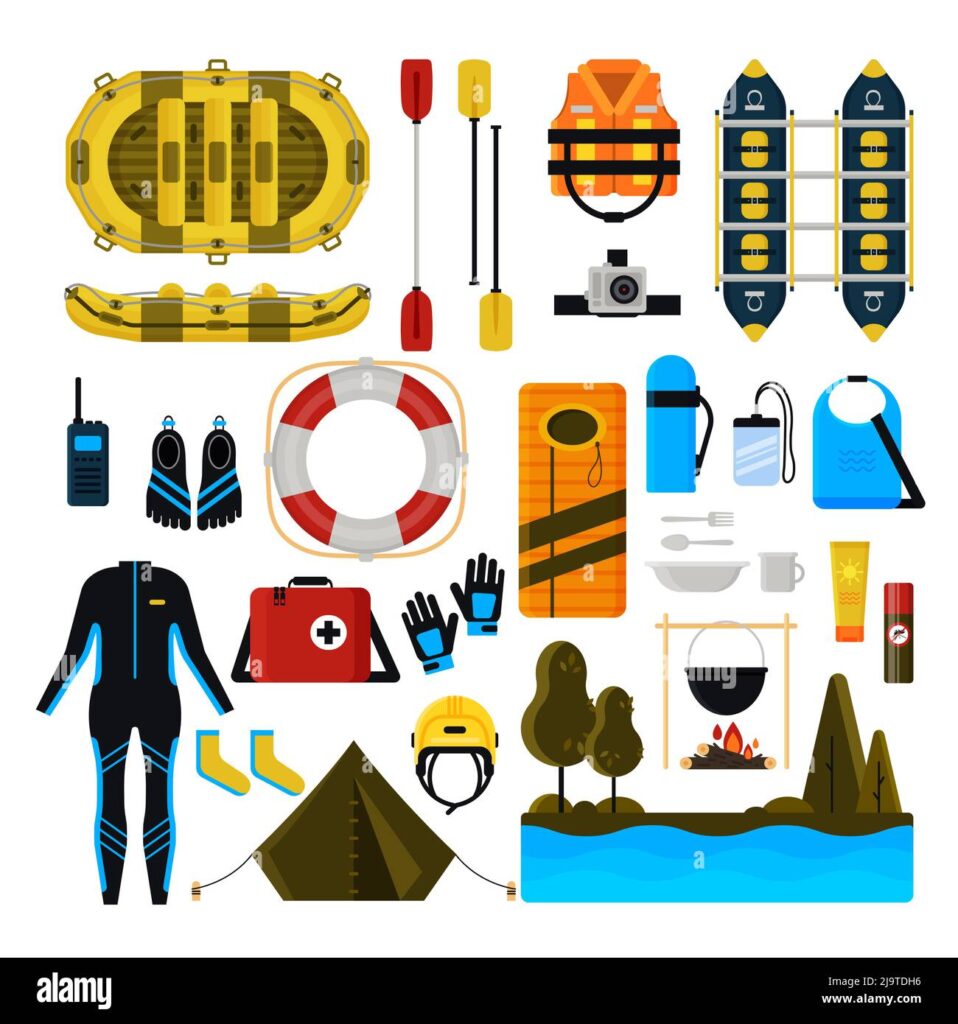
Rafting Difficulty Levels
Rafting is categorized into six levels of difficulty, depending on the intensity of the rapids and the challenges of the route:
- Level 1: Calm waters, without significant obstacles. Ideal for beginners and families.
- Level 2: Slightly turbulent waters with small obstacles, requiring basic maneuvering techniques.
- Level 3: Moderate rapids, with small drops and greater challenges for participants. Experience is required.
- Level 4: Strong rapids with large drops and rocks. Excellent paddling skills and thorough knowledge of the sport are required.
- Level 5: Very dangerous rapids with large waves, steep obstacles, and challenging conditions. Full mastery and experience in rafting are essential.
- Level 6: Considered extremely dangerous and often impossible to pass safely. This level is risky even for the most experienced athletes.
Rafting Training
Training in rafting is vital for both beginners and experienced athletes to learn the techniques and safety rules. Standard training includes:
- Safety introduction: All participants must attend an educational program on the use of rescue equipment and emergency response techniques.
- Paddling techniques: Participants are taught the proper use of paddles for river navigation, coordinated group movement, and maneuvering techniques in difficult conditions.
- Emergency management: Participants learn how to respond in case of falling into the water, as well as methods for rescuing other team members.
- Advanced techniques: For more experienced athletes, training focuses on advanced techniques, such as rescue in strong rapids and managing falls.
After completing the training, participants are prepared for the challenges of rafting, while experienced guides ensure safety and smooth operation of the activity.
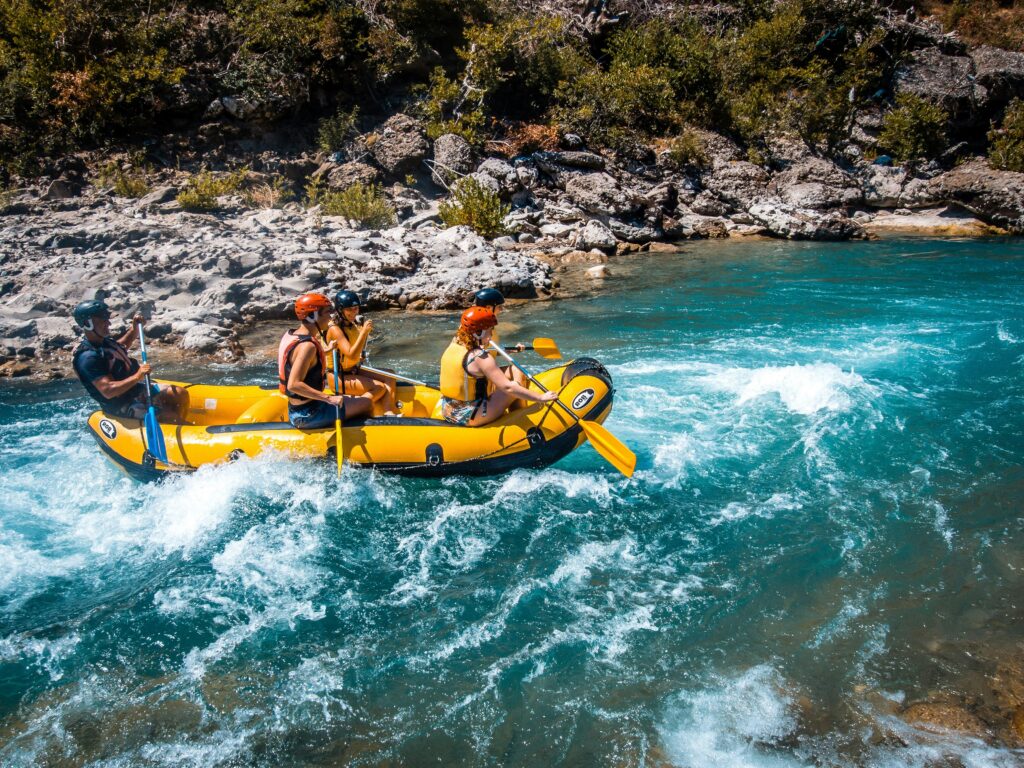
Tags


